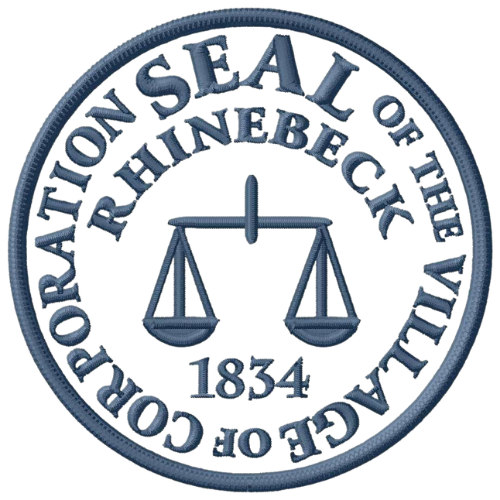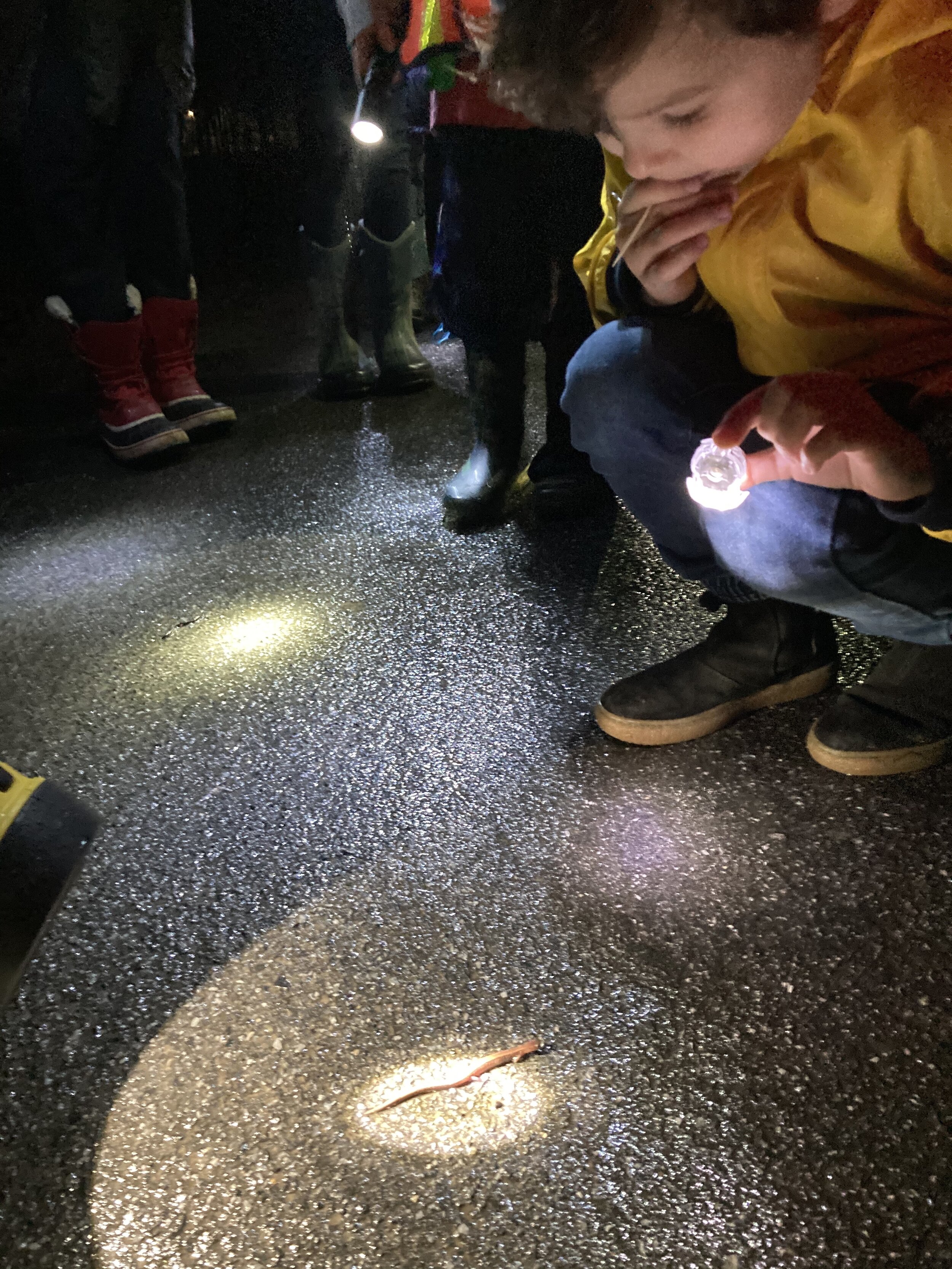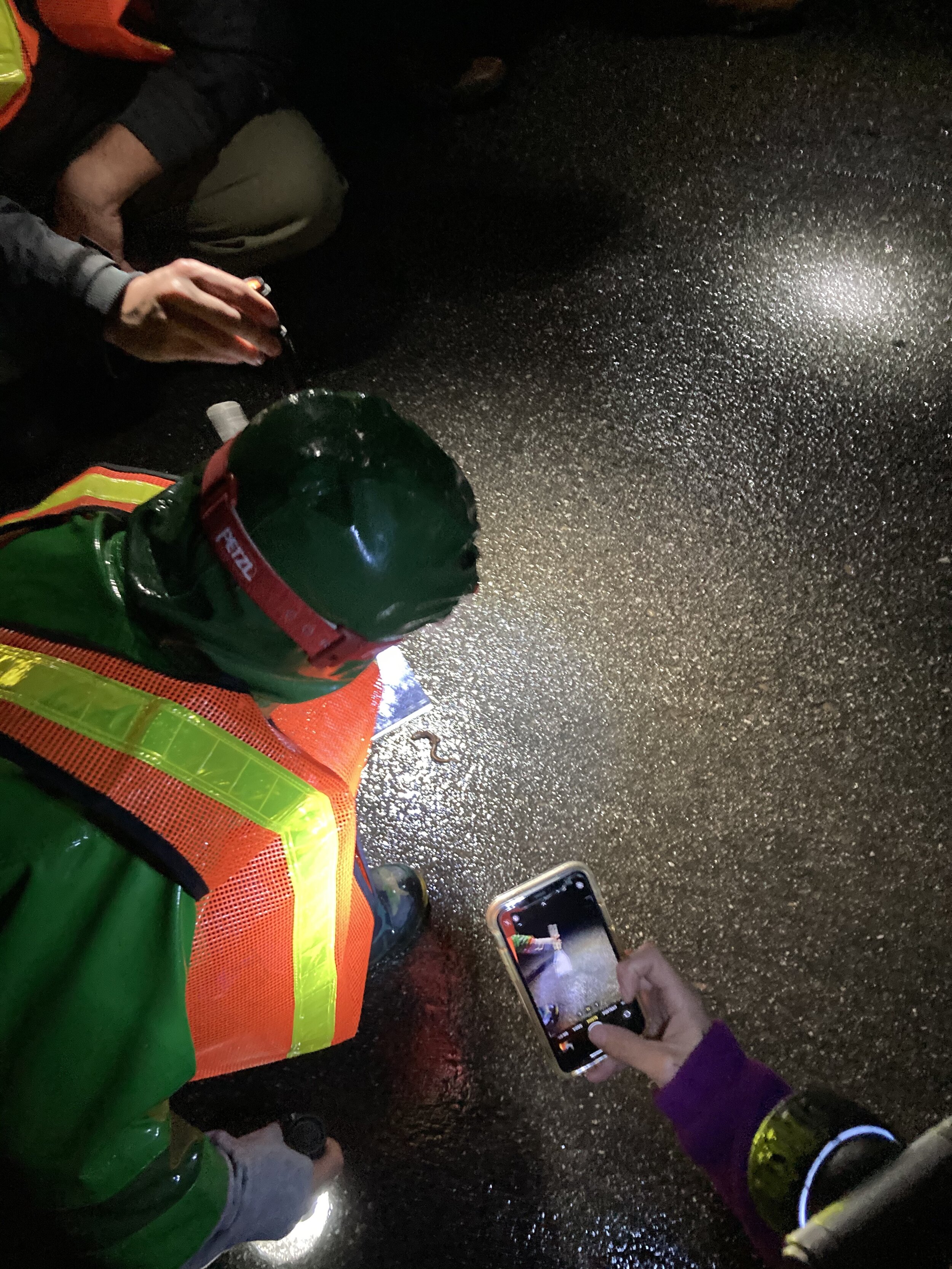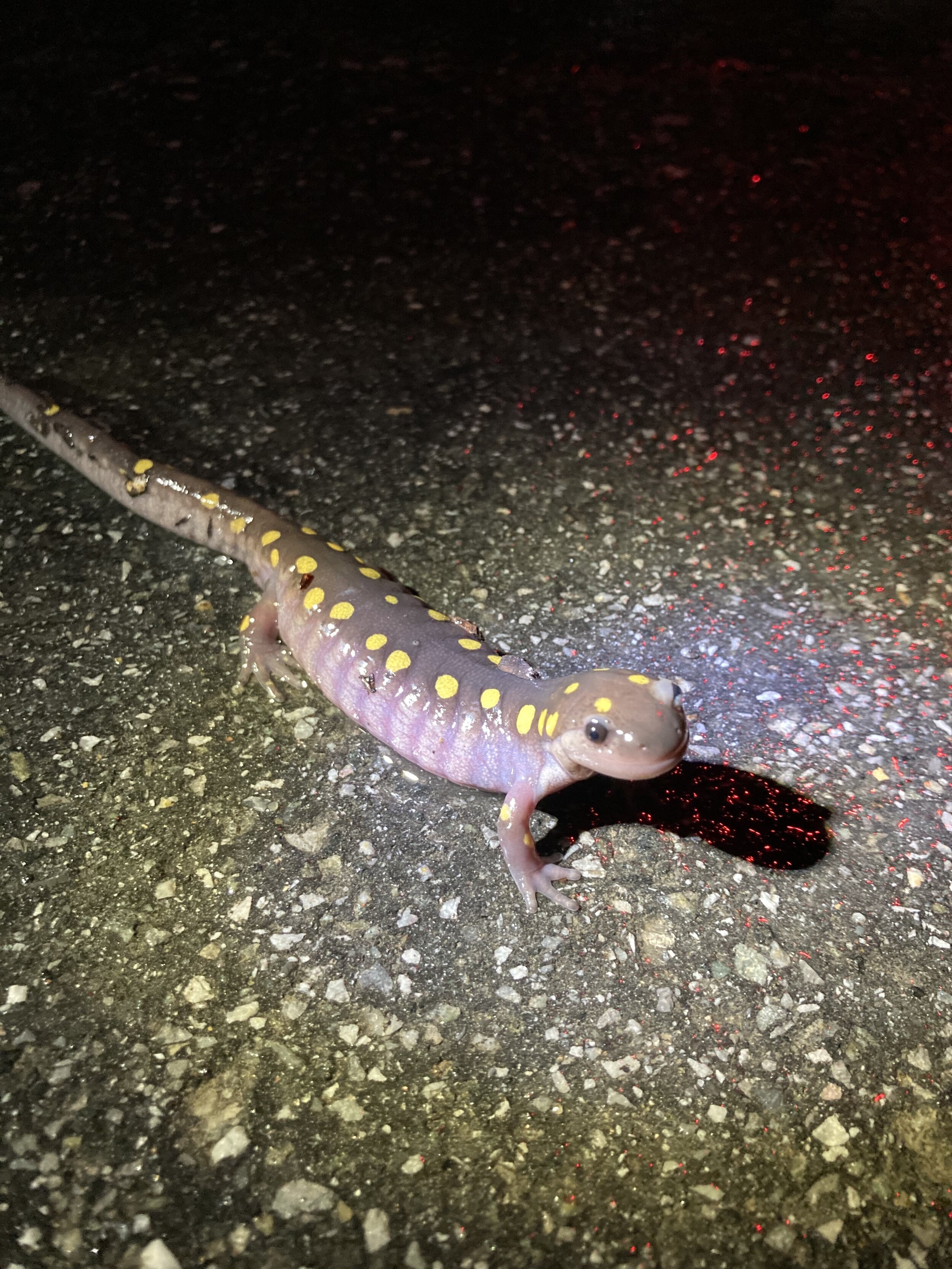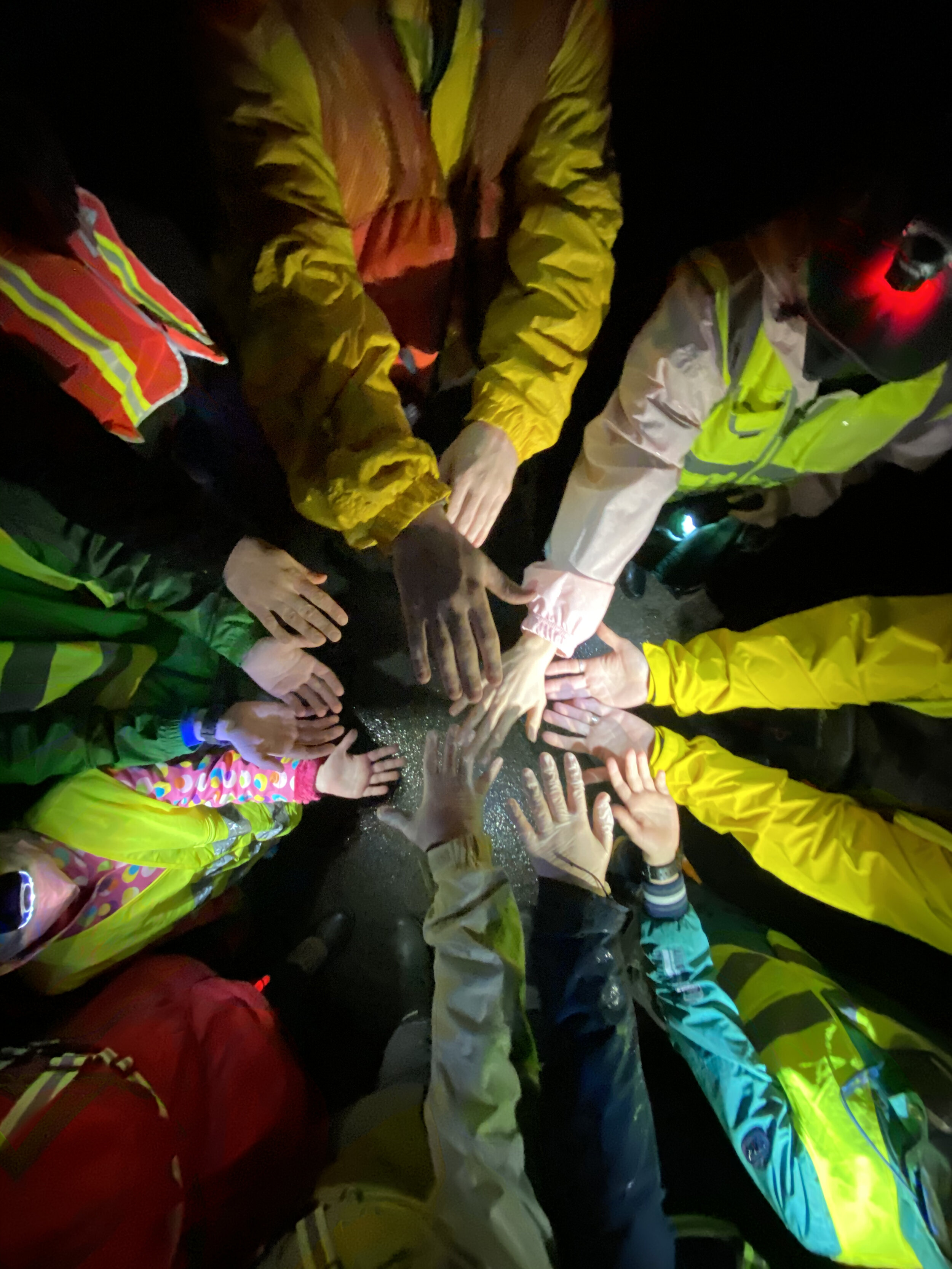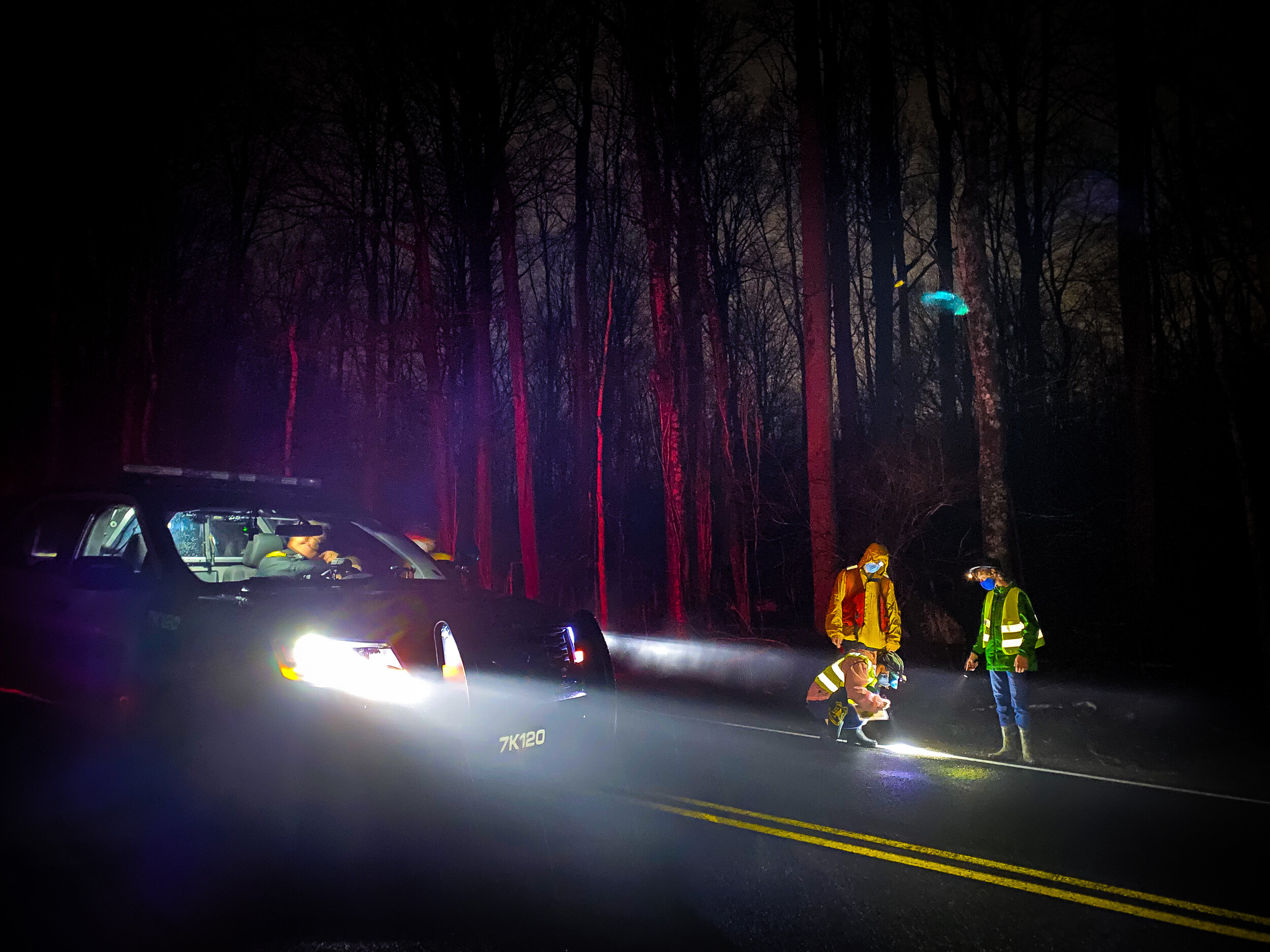Be Part of this Annual Event to Help Amphibians Safely Cross the Road to their Woodland Pools!
UPDATE: Our Big Night was March 24 and the event was a wonderful success! Our Ferncliff Forest and Chancellor Livingston School locations saw a good variety of critters. Astor Drive was mostly just frogs. Thank you so all our volunteers who showed up to help track and assist amphibians cross the road. A huge thank you to Carli and Dorna from our CSC Task Force for organizing the event!
Join us for Rhinebeck’s first amphibian data collection event! The migration is weather dependent. On the first “bit night”, Climate Smart Rhinebeck is organizing groups to go out together, 8pm-9:30pm. It could happen any time, usually between mid-March and mid-April. Register with us so we can alert you when the conditions are right!
So pack a backpack with your flashlight, clipboard, pen, forms (printable data collection form and identification cheatsheet—and we’ll have extras on hand) and have it packed and ready to roll when the notification arrives to join us!
Each year as winter begins to wind down, salamanders, newts, frogs, and other amphibians who reside in the forested areas throughout our area are lured from their forest shelters on warm, rainy nights and migrate to woodland pools for breeding. Known throughout the Northeast as Big Nights, these annual migrations typically occur in March and April when conditions are right. Unfortunately, migration pathways often cross roads and long driveways, leading to mortality of these slow-moving creatures, even in low traffic areas.
Amphibians are important links in forest food webs and indicators of healthy, functioning ecosystems. These seldom-seen creatures are declining throughout the world, and in New York, the Department of Environmental Conservation (DEC) has identified several as species of greatest conservation need in the 2015 State Wildlife Action Plan.
Why not come out with your family and become Big Night volunteers to honor Sinterklaas’s 2020 honored animal - the frog - by helping protect them and other amphibians as they leave their winter homes and head to their breeding grounds?
This year, Climate Smart Rhinebeck is promoting Big Night and wants to help our residents get involved. On the first warm, rainy night in March, you will head out shortly after sunset and stay as long as you can. Using flashlights, you will watch for and keep count of the amphibians you see. At 9:30pm, join members of CSR at the Rhinebeck Village municipal parking lot for some hot chocolate, and socially distant story and picture sharing. Afterwards, you can submit your data to the DEC.
SIGN UP
If you are interested in participating in the first Big Night and further migration nights as an individual or family, email info@climatesmartrhinebeck.org. We will send you links to the information you need to know, and the link to a GroupMe group that you can join to receive text messages on nights when volunteers are going out.
LOCATIONS
We suggest looking for amphibians in the yellow and red areas this year, and we’ve highlighted parking for three of the areas in blue. Climate Smart Rhinebeck will have a volunteer leader at each of these three locations to help.
SAFETY
Dress FLASHY! DO NOT wear dark clothing
Bring your headlamps and flashlights
Work in pairs or small groups
We have printed 6 “Slow Amphibians Xing” signs for volunteers to use when they go out
TIMING
Keep in mind that Big Night is often not easy to predict. Some years, thawed ground, warm temperatures (above 40°F), and heavy evening rain will be obvious triggers of the migration of many amphibians. Other years, the increasingly variable conditions of late winter and early spring make it difficult to predict the migration. Thus, we will use email and GroupMe texts to alert you when the first Big Night will be taking place.
TRAINING
Check out the “Resources for Volunteers” section of the DEC’s Amphibian Migrations and Road Crossings website to read the important information in the Volunteer Handbook, view volunteer training sessions, and find additional resources including safety information and identification help.
